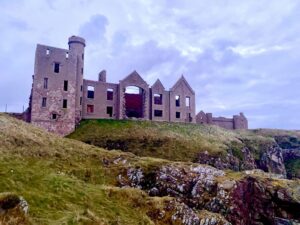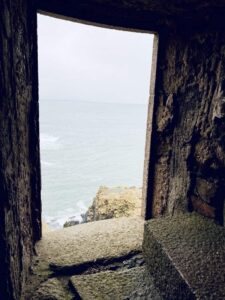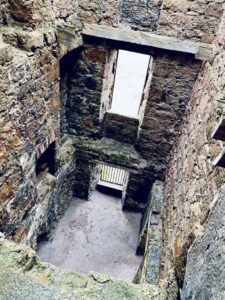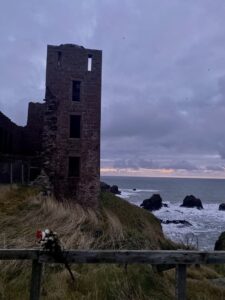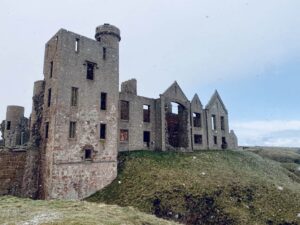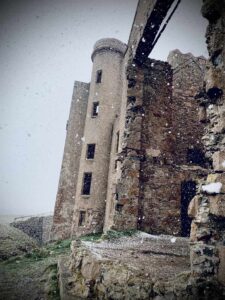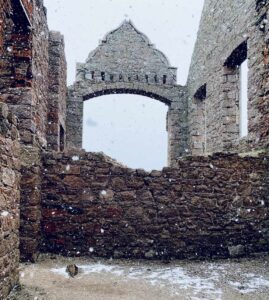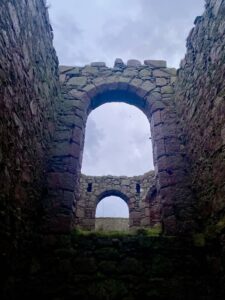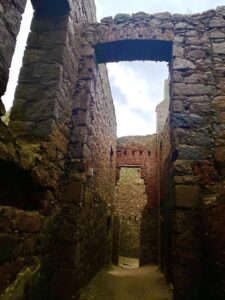Famous New Slains Castle 9 pics
The Slains Castle is can be found off the A975 to the east of Cruden Bay
The Slains Castle is can be found off the A975 to the east of Cruden Bay. There is a small car park adjacent to the main road, followed by a walk of just under a mile to the castle ruins.
| Car Park | road A975, Post code:AB42 0NS |
| Slains Castle | Post code: AB42 0HF |
The castle, which was originally known as Bowness Castle, was built by Francis Hay, Earl of Erroll from 1597 onwards. Some years earlier he had converted to Catholicism and subsequently supported the rebellion of George Gordon, Earl (and later Marquis) of Huntly, which attempted to reverse the Scottish Reformation.
The uprising was defeated and in 1594 the family’s original residence, Old Slains Castle, was destroyed by James VI (I of England) in retaliation. Hay fled the country but returned in 1597 and made peace with the King. He recovered his estates but opted not to rebuild his former family seat and instead replaced it with (new) Slains Castle, located at Bowness, six miles north of the original tower.
The new castle occupied a promontory overlooking Cruden Bay. To the north it is separated from the mainland by a steeply sided sea inlet whilst the seaward east and south sides were protected by cliffs. The original structure consisted of a rectangular Tower House that was completed around 1600. This was originally connected to the hall and fronted by a courtyard that, presumably, hosted various ancillary buildings.
The tower was later modified into a Z-plan structure and this was just the start of semi-regular enlargements of the castle. In 1664 an external corridor was added to connect the wings around the courtyard and a new facade was built in 1707. The structure was completely transformed between 1836 and 1837 when it was (predominantly) rebuilt in the Scots Baronial style.
The castle was still a magnificent structure in the late nineteenth century and it is thought to have influenced the author Bram Stoker at the time he was writing Dracula whilst he was staying at a cottage in Cruden Bay in 1895.
Slains remained in used until 1916 when it was sold to Sir John Ellerman, a ship-owner, who subsequently dismantled parts of the site. By 1925 the roof had been removed. A plan devised in the 1980s to convert the site into tourist accommodation has, to date, come to nothing.
It is believed the Slains castle is the inspiration for Bram Stoker, the setting of the tale in Count Dracula (1897).
Facts
| Built | after 1597 |
| Built for | Francis Hay, 9th Earl of Erroll |
| Rebuilt | 1836–1837 |
| Architect | John Smith |
All 9 pictures belong to April Martin


Plan Ahead with Peterhead.Live on


